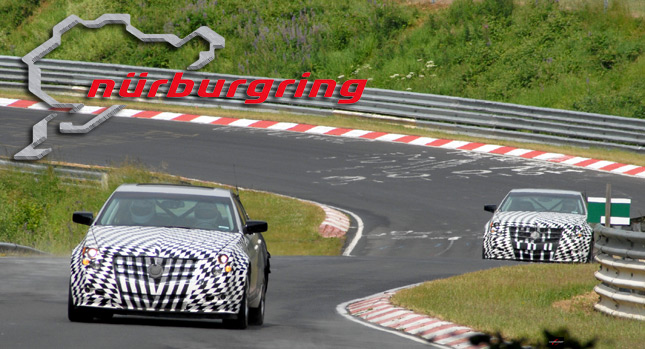If you’re reading this, chances are that you’ve at least heard of a place called the Nürburgring. Constructed in 1927, the Nordschleife, which translates to North Circuit in English, is located in Germany about 120 km (75 miles) northwest of Frankfurt in the heart of the Eifel Mountains.
Three-time world Formula 1 champion Jackie Stewart gave it its “Green Hell” nickname. Niki Lauda nearly lost his life in a fiery accident at the 1976 Grand Prix. The Austrian, however, was lucky as 68 drivers perished in accidents during those years. The Nordschleife was subsequently banned from the F1 calendar.
 The track stretches across 12.9 miles (20.8 km) and incorporates 73 corners, most of which call for experienced drivers. If you get it wrong, you’re more likely than not to end up in the Armco, in which case, not only will you have to fork out money to repair your vehicle, but also to fix any damages you may have caused to the circuit.
The track stretches across 12.9 miles (20.8 km) and incorporates 73 corners, most of which call for experienced drivers. If you get it wrong, you’re more likely than not to end up in the Armco, in which case, not only will you have to fork out money to repair your vehicle, but also to fix any damages you may have caused to the circuit.
In recent years, this rather dangerous track has become increasingly important to the automotive industry. Some manufacturers, like Porsche, Jaguar and BMW, have permanent premises there and most others spend a considerable amount of time honing their newest models.
They also like to advertise their latest lap times, something that has sparked a bitter exchange of words between Nissan and Porsche concerning the GT-R. It has spread beyond sports cars: nowadays, manufacturers tout even their electric vehicles’ lap times.
“I truly think Nürburgring resonates with Americans”, Jenn Hoffman, advertising manager for the Cadillac ATS sports saloon, told Automotive News. “It’s a punishing track and the Europeans have known this for a long time. But the message is that you really have to take your car to Nürburgring to prove it to the world today.”
That’s why the ATS ad copy reads “Tested and perfected at the Nürburgring”.
It’s not just the company execs, but the dealers, too. “Oh, yes, people care”, says Texas dealer Ben Keating who sells a number of brands but likes to introduce himself as “a Viper dealer” who also fields his own racing team. “The Nürburgring name matters a lot to some people. It matters to me,” he told the publication.
Chrysler’s SRT CEO Ralph Gilles with the old Viper out of production and the third-generation one not ready yet, phoned Keating last summer.
“We previously held the lap record”, Gilles told Autonews. “We held the record for two years and then Corvette came along and beat us, and then Porsche beat us, and then the Lexus LFA beat us. So it was really annoying me.”
Keating agreed to ship a new 2010 Viper to Germany, on the condition that he came along. The (then Dodge-branded) Viper recorded a 7’12’’1 time.
With his mission accomplished, Gilles made sure he spread the message to car clubs around the US. The implication was clear: if the 2003-designed car could accomplish that, imagine what the brand-new, 2013 model would do.
The question is whether any of this matters to you as a car buyer, or if it’s just a marketing tool employed by carmakers. Does anyone care about a lap time some professional test driver has posted in a place thousand miles away that you will most likely never visit anyway?
“The average American is not a sports car buyer”, concedes Keating. On the other hand, he says, “sports car buyers are different. And they do know the word. When you’re talking about sports cars, Nürburgring has become the common world yardstick to measure ourselves.”
VIDEO



